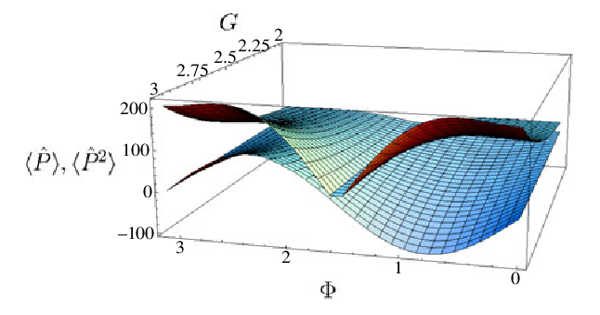A football, on the other hand, is not a quantum particle. There are significant differences between what we know in everyday life and tiny quantum objects. Quantum phenomena are typically extremely fragile. To study them, only a small number of particles, well shielded from the environment and at the coldest temperatures possible, are typically used.
However, thanks to a collaboration between the University of Vienna, the Austrian Academy of Sciences, and TU Wien, it is now possible to measure and control a hot glass sphere made up of approximately one billion atoms with unprecedented precision.
Its movement was deliberately slowed until it reached the ground state with the least amount of energy. The measurement method nearly reached the limit set by Heisenberg’s uncertainty principle—physics simply does not allow for any greater precision. This was made possible by applying special control engineering methods to quantum systems. The findings have now been published in the prestigious scientific journal Nature.
Perfect precision is impossible
One of the most fundamental principles of quantum theory is that measurement influences the measured object. “Werner Heisenberg devised a famous thought experiment—the so-called Heisenberg microscope,” explains physicist Lorenzo Magrini of the University of Vienna, the study’s first author. “If you want to precisely measure the position of an object under a microscope, you must use light with the shortest wavelength possible. However, because a shorter wavelength implies more energy, the particle’s movement is more strongly disrupted.” You simply cannot accurately measure a particle’s location and state of motion at the same time.
The product of their uncertainties is always limited by Planck’s constant—this is the so-called Heisenberg uncertainty principle. However, it is possible to find out how close one can get to this limit set by nature.
The measurement method almost reached the limit set by Heisenberg’s uncertainty principle—physics just does not allow for any more precision than that. This was made possible by applying special methods from control engineering to quantum systems
Prof. Markus Aspelmeyer’s team at the University of Vienna is investigating this using a glass sphere with a diameter of fewer than 200 nanometres and a population of about one billion particles—very small by our standards, but still very large in comparison to the objects typically studied in quantum physics.
A laser beam can be used to keep the glass sphere in place. The laser heats the sphere’s atoms, causing the internal temperature to rise to several hundred degrees Celsius. This means that the atoms in the glass sphere are violently wobbling around. The collective motion of the sphere in the laser trap, rather than the wobbling movements of individual atoms, was studied in the experiment. “These are two completely different things,” says Markus Aspelmeyer, “just as the movement of a pendulum in a pendulum clock is something different from the movement of the individual atoms inside the pendulum.”

Quantum control technology
Even though the glass sphere is a macroscopic object, the goal was to precisely control its pendulum motion on a quantum level. This can only be accomplished with a perfectly designed control system that has been meticulously adjusted to the experiment. Prof. Andreas Kugi’s team at TU Wien took on this task.
“Control engineering is about influencing systems so that they exhibit desired behavior independent of disturbances and parameter fluctuations,” Andreas Kugi explains. “This could be a robot arm, a factory production line, or even the temperature of a blast furnace.” Applying modern control engineering methods to quantum systems opens up new possibilities. “However, there are challenges that do not exist in classical system theory and control engineering,” Kugi explains.
“In classical control engineering, the measurement has no or negligible influence on the system. In quantum physics, however, this influence cannot be avoided, for very fundamental reasons. We therefore also have to develop novel control engineering methods.”
This was a success: using a sophisticated microscopy technique, the light backscattered by the glass sphere was detected as thoroughly as possible. The position of the sphere was determined in real-time by analyzing the scattered light, and an electric field was continuously adjusted in such a way that it permanently counteracted the movement of the glass sphere. Despite the fact that it is a relatively large object at high temperatures, whose atoms wobble vigorously, it was possible to slow down the entire sphere and put it into a state of motion that corresponds to the quantum-physical ground state, i.e. the state of the smallest possible kinetic energy.
Promising cooperation between physics and control engineering
“You must always consider both spatial and kinetic uncertainty. Overall, the glass sphere’s quantum uncertainty was only 1.7 times Planck’s quantum of action “Lorenzo Magrini says Planck’s constant would be the absolute theoretical lower limit; never before has an experiment used an object of this size come this close to the absolute quantum limit. The measured kinetic energy corresponding to a temperature of only 5 micro-Kelvin, or 5 millionths of a degree above absolute zero. Even if the atoms that make up the sphere are extremely hot, the movement of the glass sphere as a whole can be assigned an extremely low temperature.
This success demonstrates the enormous potential of this new combination of quantum physics and control engineering: both research groups want to continue working in this direction and use control engineering know-how to enable even better and more precisely controlled quantum experiments. There are numerous applications for this, ranging from quantum sensors to quantum information technologies.
















